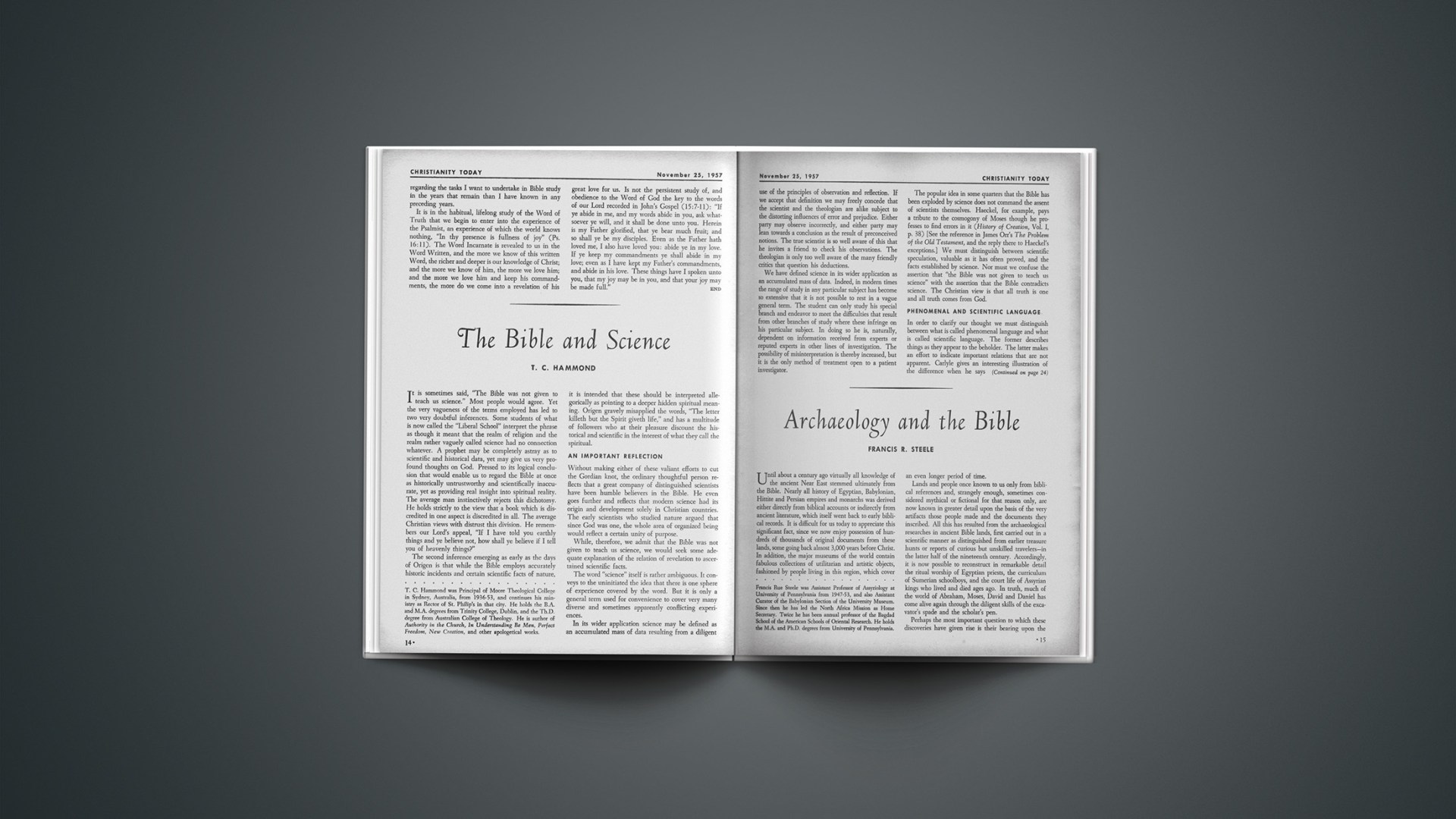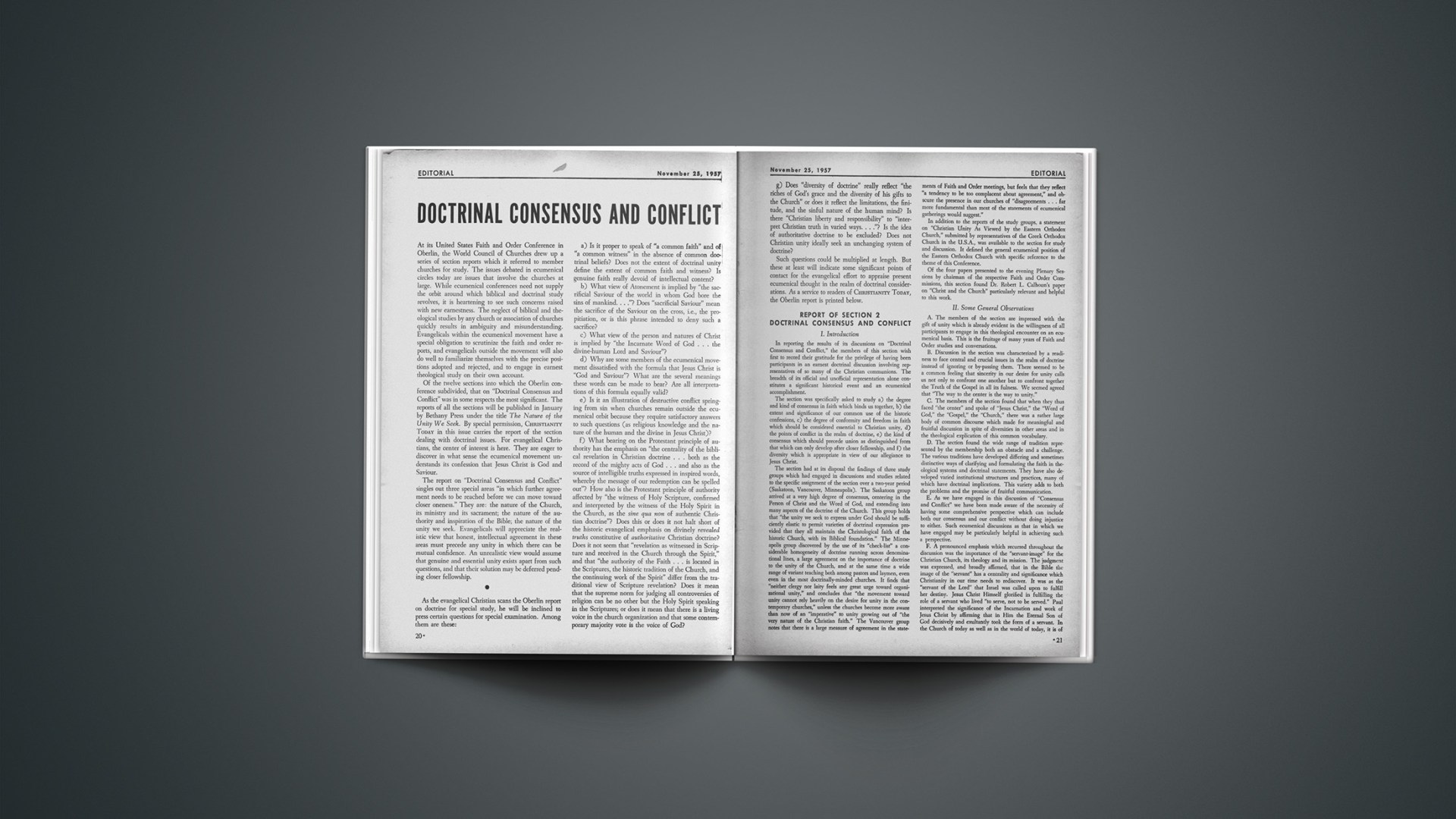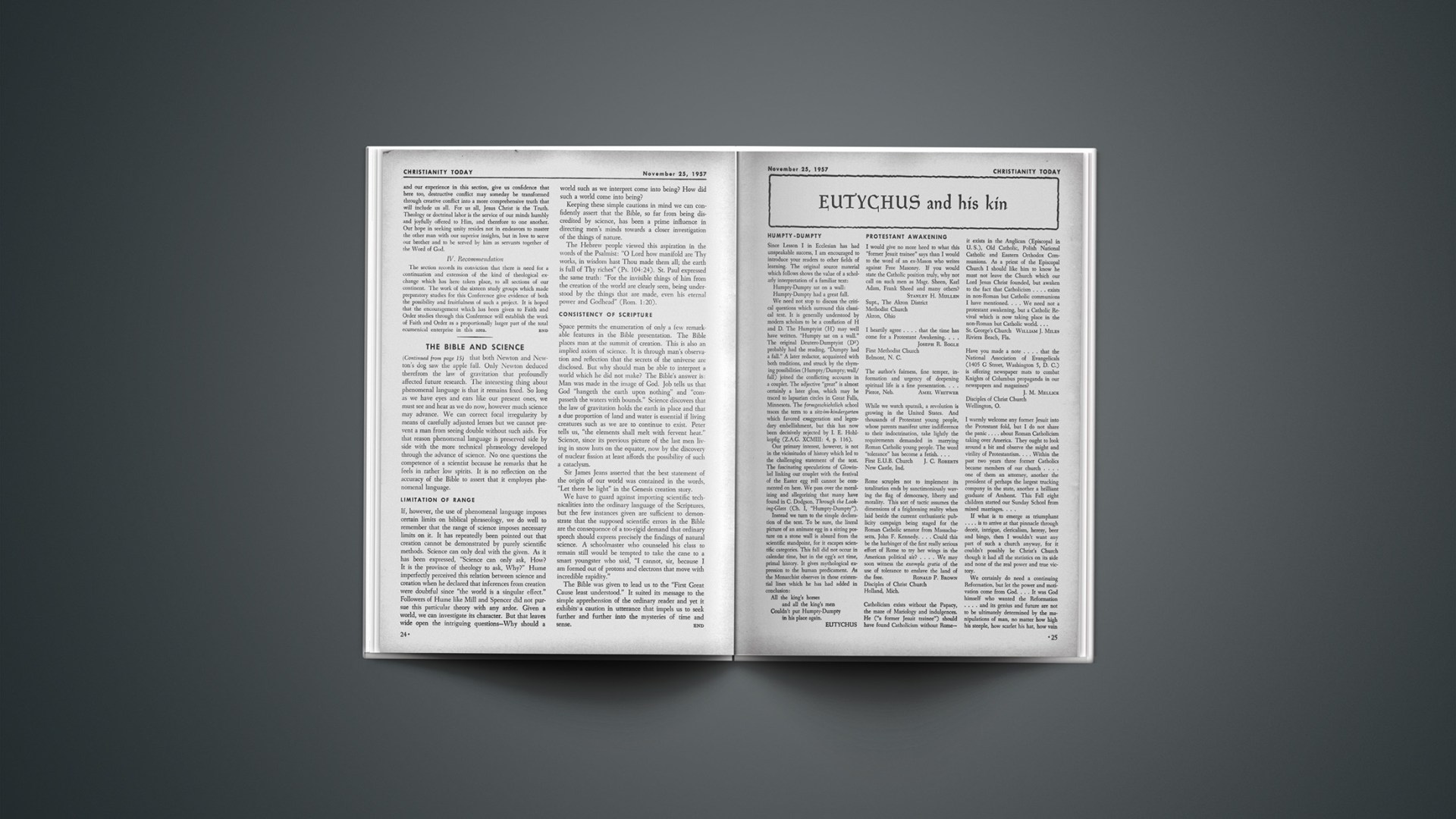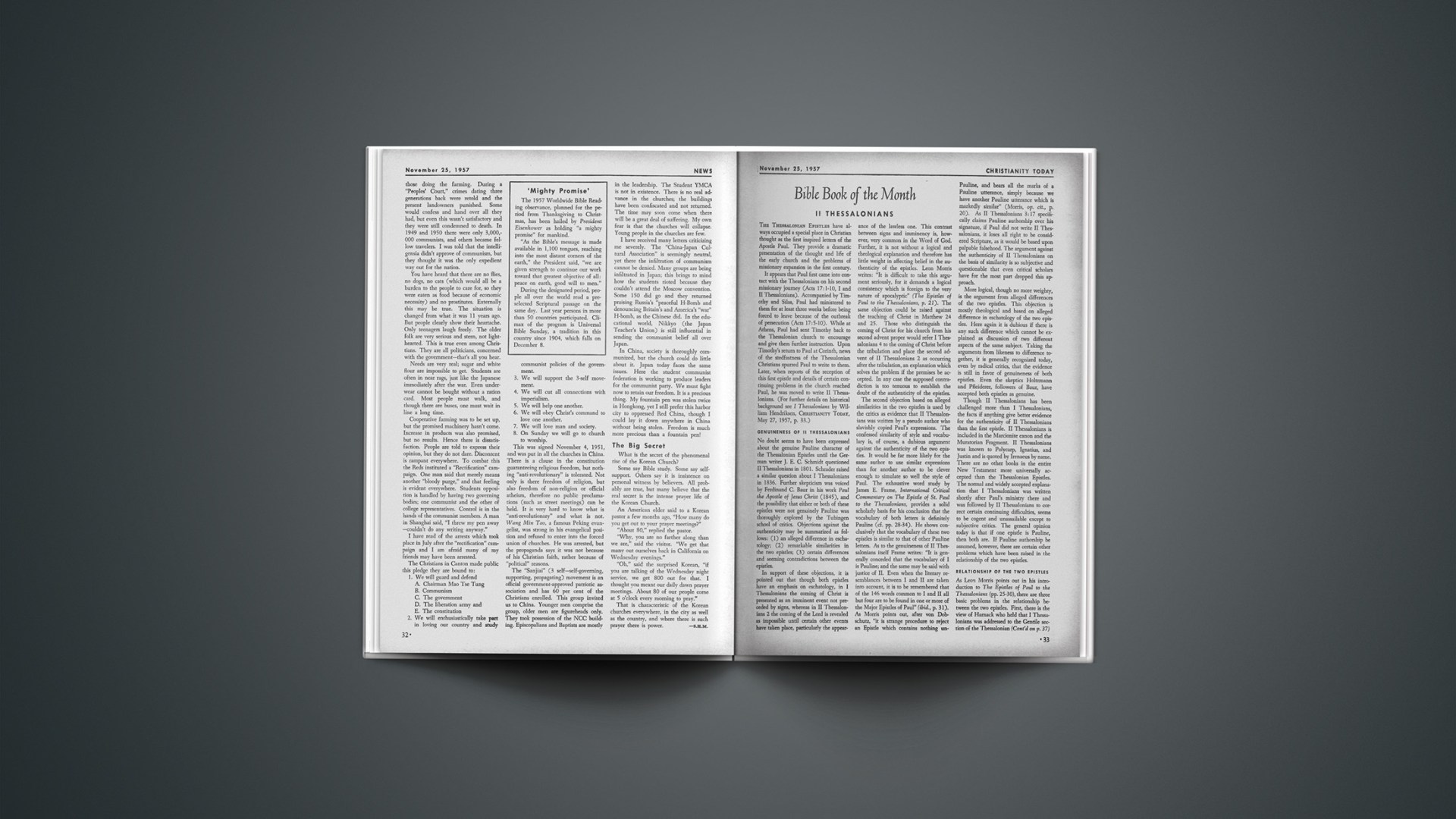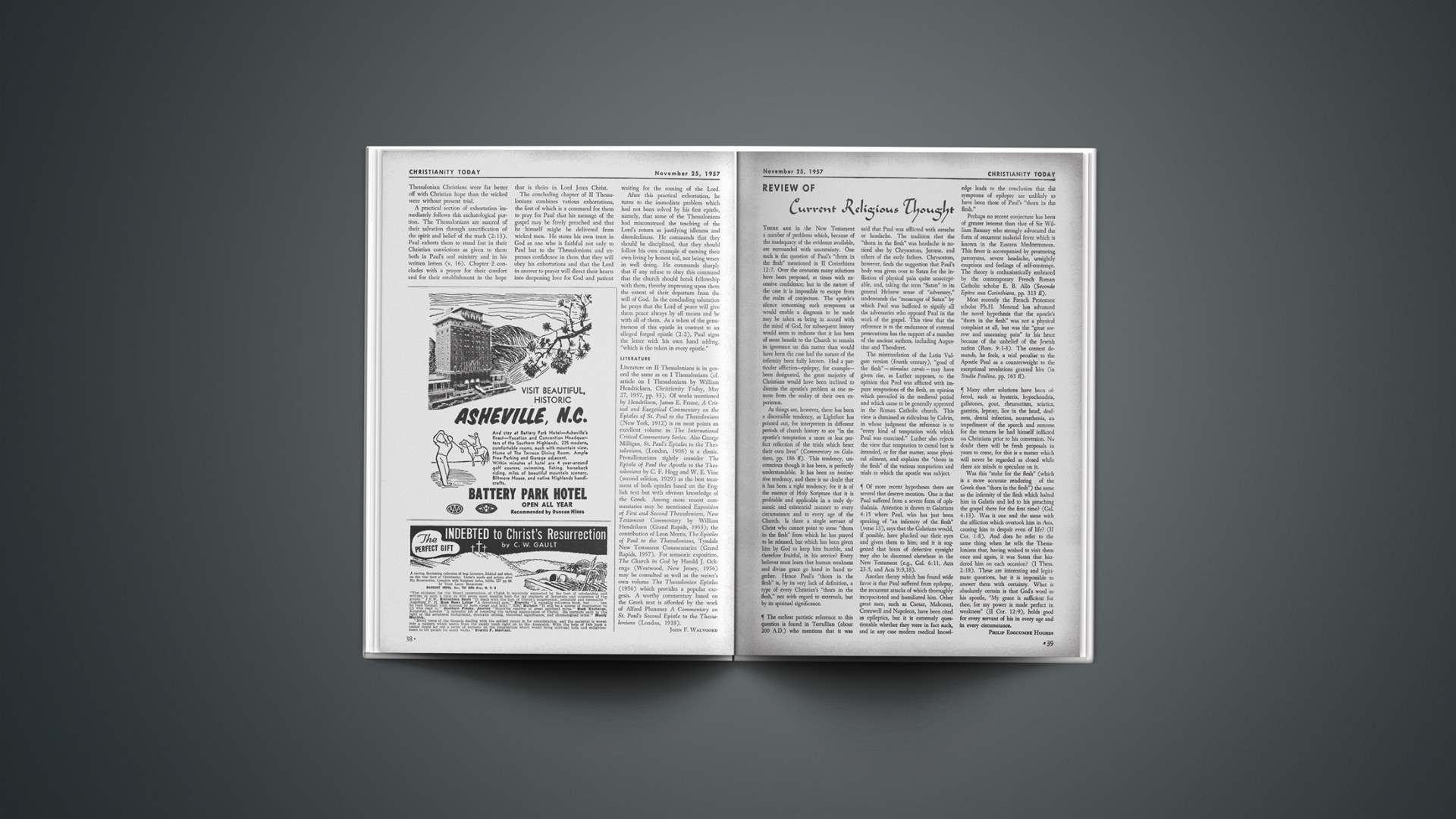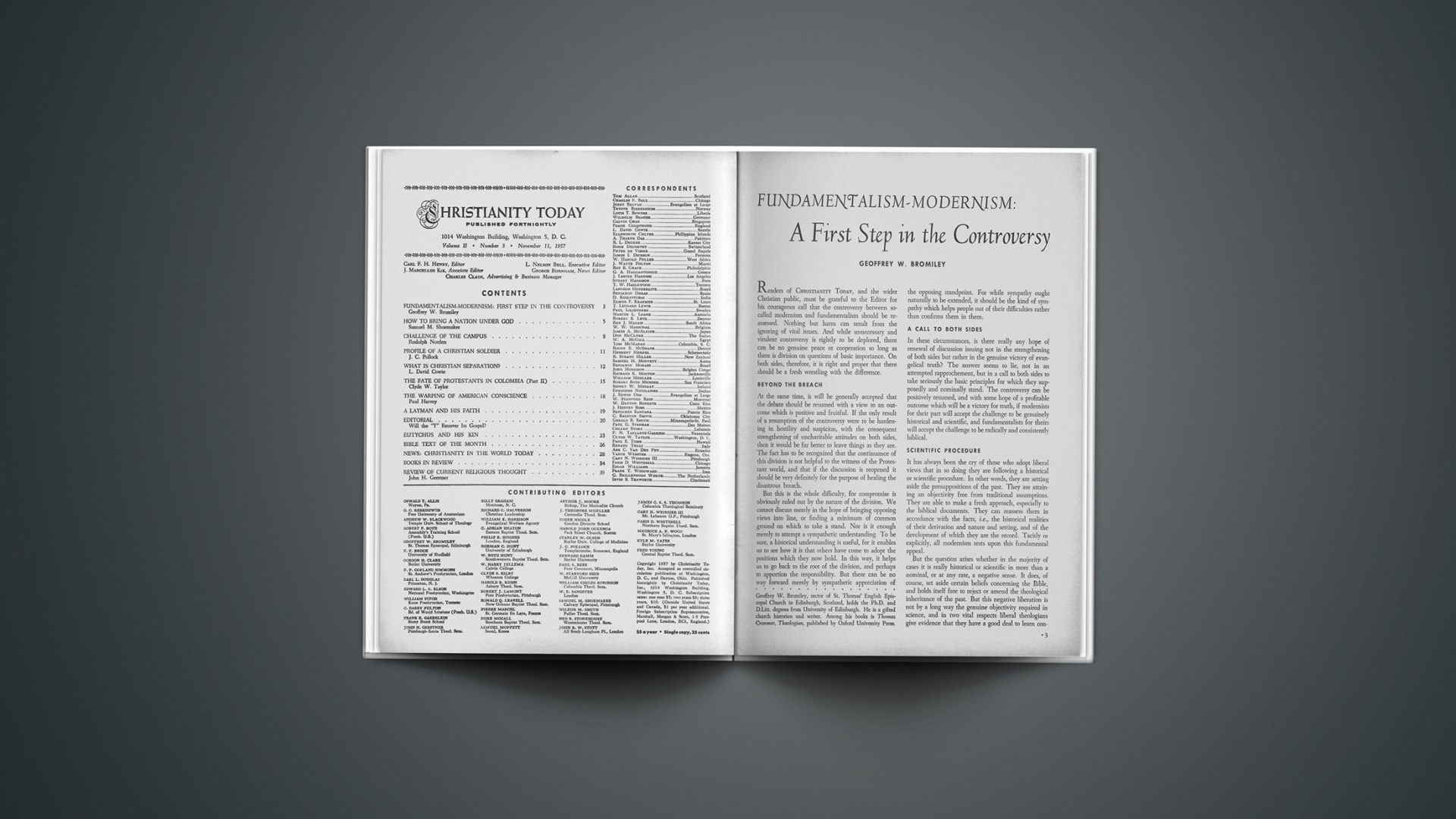Until about a century ago virtually all knowledge of the ancient Near East stemmed ultimately from the Bible. Nearly all history of Egyptian, Babylonian, Hittite and Persian empires and monarchs was derived either directly from biblical accounts or indirectly from ancient literature, which itself went back to early biblical records. It is difficult for us today to appreciate this significant fact, since we now enjoy possession of hundreds of thousands of original documents from these lands, some going back almost 3,000 years before Christ. In addition, the major museums of the world contain fabulous collections of utilitarian and artistic objects, fashioned by people living in this region, which cover an even longer period of time.
Lands and people once known to us only from biblical references and, strangely enough, sometimes considered mythical or fictional for that reason only, are now known in greater detail upon the basis of the very artifacts those people made and the documents they inscribed. All this has resulted from the archaeological researches in ancient Bible lands, first carried out in a scientific manner as distinguished from earlier treasure hunts or reports of curious but unskilled travelers—in the latter half of the nineteenth century. Accordingly, it is now possible to reconstruct in remarkable detail the ritual worship of Egyptian priests, the curriculum of Sumerian schoolboys, and the court life of Assyrian kings who lived and died ages ago. In truth, much of the world of Abraham, Moses, David and Daniel has come alive again through the diligent skills of the excavator’s spade and the scholar’s pen.
Perhaps the most important question to which these discoveries have given rise is their bearing upon the historical records of the Bible. In general, there are two opposite opinions. Some hold that although many historical statements in the Bible agree with the facts determined by archaeological studies, in at least as many instances the new findings point up errors in the Bible, especially in the earlier periods and the prophetic books. Others believe that there is perfect and complete agreement between the two sources of data. In fact, however, both positions are incorrect. The fundamental error of the first is its assumption of equal or superior validity and consequent authority for the partial data of science over the records of the Bible. The fallacy of the second is its assumption that human interpretation of observed data in archaeological science is as reliable as divine revelation concerning historic events recorded in the Bible. Such false assumptions have inevitably led both opponents and proponents of the Bible to make improper use of archaeological data in relation to the biblical text.
Bearing On The Bible
This tendency manifests itself characteristically in the use of the word “prove” when describing the function of archaeology with relationship to the Bible. It has led, for example, to such statements as “recent excavations at Jericho have shown that this city did not exist as a significant settlement at the time of Joshua, thereby proving that the biblical tradition of Joshua chapter six is false,” or, on the other hand, “flood deposits at Ur prove that the biblical flood actually occurred.” As a matter of fact, neither the chronological data regarding Jericho nor the interpretation of “flood” evidence at Ur are so certain that they can be cited as superior to and hence either corrective to or confirmatory of the Bible.
To illustrate: let us suppose that the citizens of a small town begin to question whether they are getting full measure when they purchase in the local shops. They feel they are getting less than the yards of goods they pay for. Having been informed that all standards in use in the town must conform with the national standard in Washington, D. C., the skeptical citizens decide to check the national standard for accuracy. In order to do so, one citizen acquires a cloth tape measure, another a steel measuring tape, and yet another a wooden yardstick. And they all entrain for Washington. Upon arrival they proceed to the Bureau of Standards and request the opportunity to apply their several manifestly approximate measures to the platinum meter bar, which is the accepted national standard of accurate measurement, in an attempt to discover whether or not their measures are, in fact, long enough. Such insane behavior would certainly have been detected at an early stage and the travelers would have been hurried off to confinement, reserved for persons of known mental aberration. Yet, this identical procedure is followed by multitudes of respected scientists and misguided Christians who are apparently unaware that it is folly to apply final criticism of the Scriptures by use of the, at the very best, relative criteria of scientific truth.
Value And Function
What then is the value and function of archaeological materials as related to the Bible? There are two areas where this rich body of data, so recently discovered and still accumulating, is very useful. It provides the Christian with abundant material to fill in the background of biblical history, thus giving better perspective. It also helps to correct many mistaken concepts regarding biblical history, which have raised honest questions in the minds of persons seeking to understand the Bible.
In the first place, we must recognize that although the Bible gives a true picture of the history it records, it does not necessarily convey a balanced picture of ancient Near East history, and for very good reasons. The purpose of the Bible is not to record ancient history but rather the history of God’s redemptive plan for fallen man. Therefore, it treats general history selectively, incorporating only those events bearing on God’s special dealing with men for salvation. As a result, the most important periods of Egyptian and early Babylonian history receive no mention whatever while relatively minor rulers in Egypt and Syria are often featured prominently. Had we no other material at hand than that which the Bible affords, our picture of general history in the ancient Near East would be seriously distorted and out of proportion. Archaeological data, on the other hand, allow us to appreciate the development of biblical history against the total background.
For example, we now recognize that the dynasty of David and Solomon witnessed the only significant local empire in recorded Palestinian history, and this fact throws light on the biblical ascription of glory to the reign of Solomon. Furthermore, we now appreciate the political climate in which this empire flourished when archaeology shows that the major powers surrounding Palestine at that time were in marked decline either through internal upheaval or general disintegration. In short, we see how God prepared the times for his people.
In later periods archaeological records help us to visualize the power of the Assyrian empire and the might of its vast armies campaigning far and wide. Official records and reliefs from the royal palaces make it easy to sympathize with Hezekiah as he trembled at the thunderous approach of the invading host. They also highlight the power of God to deliver his embattled people when they placed their firm trust in him.
These same materials can be used to destroy the common misconception that the Bible is at worst simply religious myth and at best chauvinistic, unreliable local history, by demonstrating the numerous remarkable and detailed parallels between biblical history and the contemporaneous secular records of the same events. But it must be pointed out and strongly emphasized that approval or agreement of the secular documents can only lift the biblical records to their own level—that of relatively accurate accounts of current events made by fallible men—and by no means establish the complete reliability of the biblical text. There are sufficient evidences of error and bias in archaeological records to show their limitations in this respect. But even within these limitations much helpful material abounds and is a welcome corrective to the irresponsible extreme criticisms of earlier days, which, strangely enough, still live on in the popular mind long after their refutation by solid facts.
Spiritual Greatness
But the multitude of data collected by a century’s research into the past history of the ancient Near East also emphasizes the sharp contrast between the people of Israel and their neighbors. Always and in almost every form decidedly inferior to the surrounding pagan nations around in technical skills and material culture, Israel nonetheless possessed an ethical religion far above them all. Egyptian papyri, for example, witness to a highly developed science of both medicine and surgery long before Israel’s national history began, and one which continued long after the southern kingdom had ceased to exist. Moreover, temples and sculpture of Egypt demonstrate architectural and artistic skill and feeling far beyond anything ever produced in Palestine. It is noteworthy that almost without exception when skilled craftsmen were needed for public works in Israel and Judah, the biblical text points out that they were imported from outside. Nevertheless, the host of confused and often conflicting gods of Egyptian religious texts and the worship of them bespeak concepts of deity far below the material achievements of the same people, and woefully inferior to the theology of the Hebrew Scriptures, whose concept of “ethical monotheism” is acknowledged by all scholars as unique in the ancient world.
Likewise, we marvel at the advanced stage that Babylonian mathematical science had reached well before the time of Moses, as hundreds of clay tablets indicate familiarity with many principles long thought to have been Greek contributions to science. In addition, we find such technical skills as metallurgy, sculpture in various materials, and gem cutting developed in Mesopotamia even before the days of recorded history, to a degree never approached by the people of Israel. Once again, however, as in Egypt, the picture of squabbling, scheming gods seen in the Babylonian documents evidences a religious morality quite opposite to that of the Bible.
Morality And Technical Skill
The truth established by these sharp contrasts is a highly significant one, cutting across the basic assumption in the interpretation of anthropology. The marked disparity between cultural and psychical achievements in Egypt, Babylonia and Israel should teach us not to assume any necessary link between the two in the course of human history. Yet an axiom of anthropological science is the assumption that psychical development in man will follow closely his improvement of technical skills. Ancient man with simple tools, we are told, have naive ideas concerning religion. As his tools became more complicated, his theology became more sophisticated. The basic premise for such reasoning is the broad concept of organic evolution implicitly held by the majority of present-day scientists. Therefore the line of argument is understandable, but not acceptable. The Bible tells us of a man whose level of culture development was absolutely minimal. He would be described in scientific terms of today as a simple agriculturist with, so far as we can determine, a primitive tool industry, no knowledge of fire, and actually no domestication of selected animals (all were obedient to him). Yet this man had intimate personal converse with God in a way not possible for anyone today. Can any contrast be greater than that?
This account of Adam is often rejected today. But the principle that no necessary correlation exists between technology and theology has been demonstrated over and over again.
We might even cite here examples of the exact opposite to Adam, namely, cases of extremely advanced technical skill and yet incredibly retrogressive religion and morality. During World War II scientists from a nation in the forefront of technology committed barbaric atrocities unknown in the civilized world for centuries, while the nation itself, once a cradle of Protestant Christianity, officially reintroduced the worship of long forgotten pagan deities. The biblical pattern of human development agrees with history, even if both contradict the theories of anthropology.
Both opponents and proponents of the Bible err when they reverse the order of authority, which distinguishes the data discovered by scientific investigation and facts received by divine revelation. Whether their purpose is to attack or to defend the historicity of the Bible makes no difference. Neither archaeology nor any other science affords evidence of a character equal to the task.
Francis Rue Steele was Assistant Professor of Assyriology at University of Pennsylvania from 1947–53, and also Assistant Curator of the Babylonian Section of the University Museum. Since then he has led the North Africa Mission as Home Secretary. Twice he has been annual professor of the Bagdad School of the American Schools of Oriental Research. He holds the M.A. and Ph.D. degrees from University of Pennsylvania.

